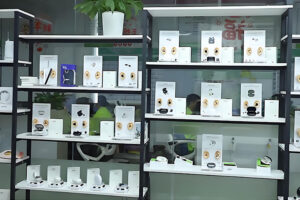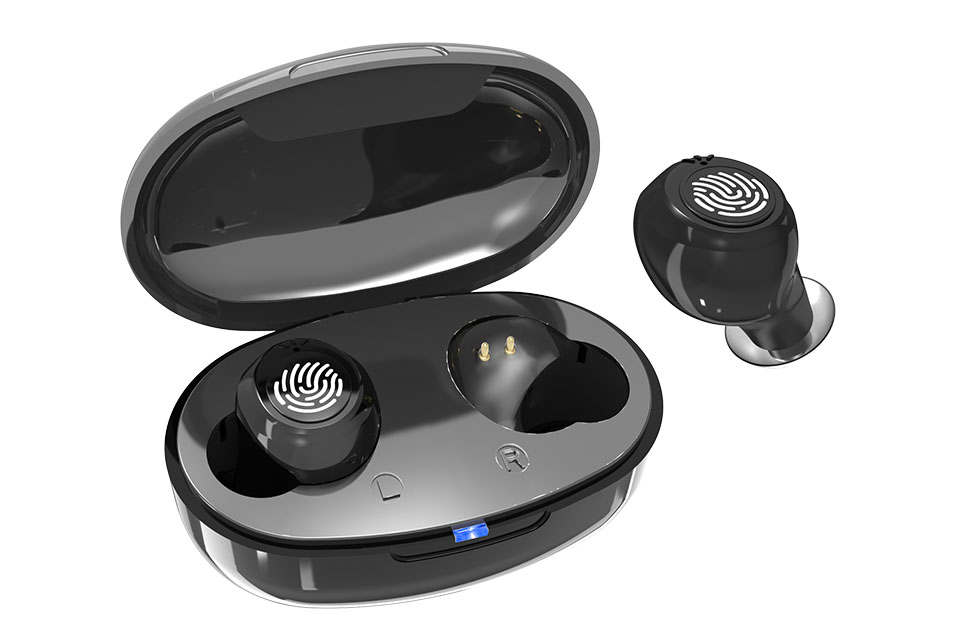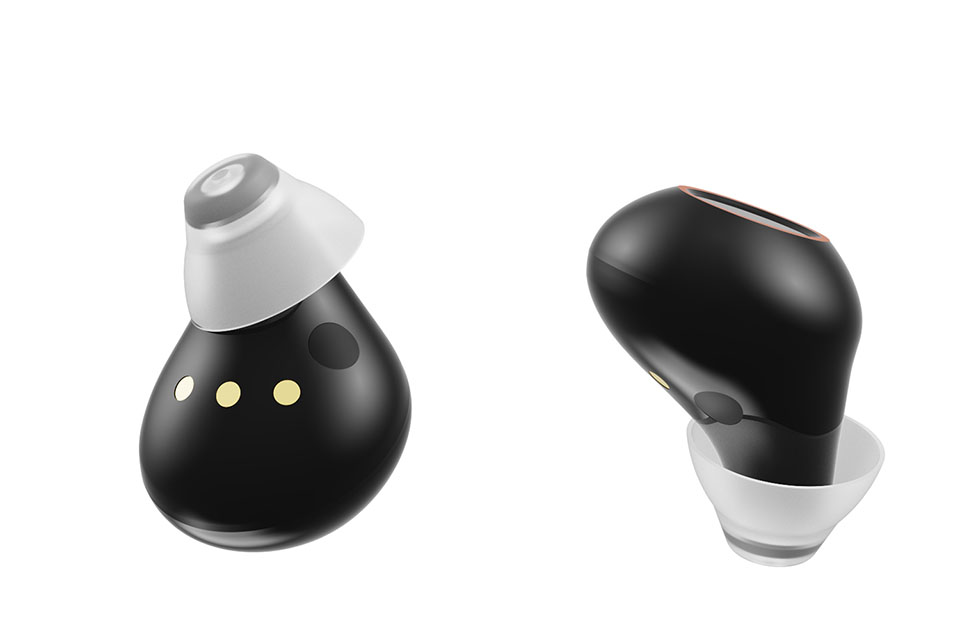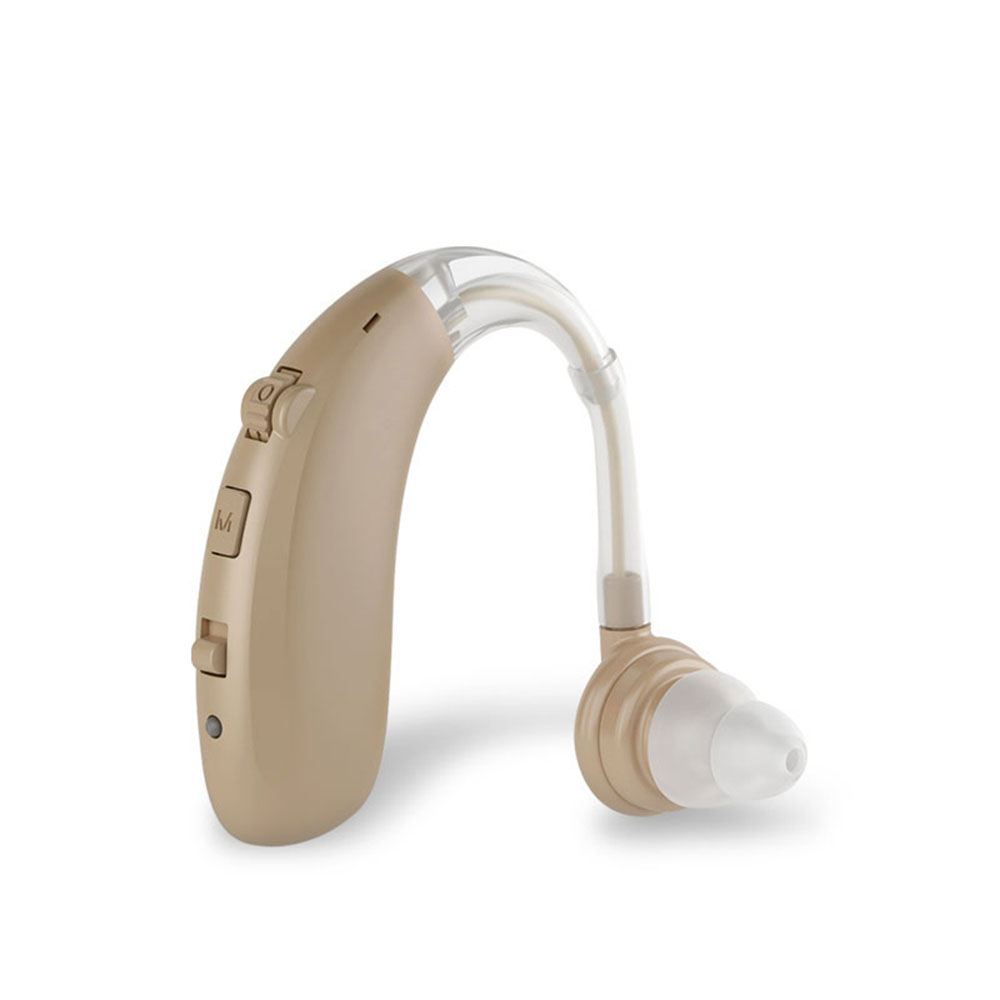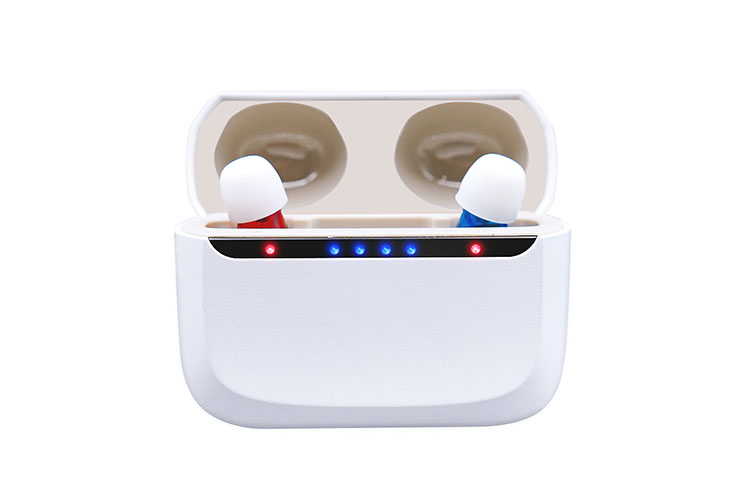1. Definition and Classification of “Invisible” Technology
Invisible hearing aids (CIC/IIC) represent the cutting edge of discretion and functionality. They are classified as:
- Chameleon-like materials: Adapt their color to the ear canal (e.g., photochromic polymers).
- Transparent interfaces: Printed circuits on flexible substrates with conductive oxides (ITO).
- Non-detectable embedded systems: 2.4 mm² microprocessors such as the Bluetooth 5.3 DSPs in our CIC Hearing Aids models.
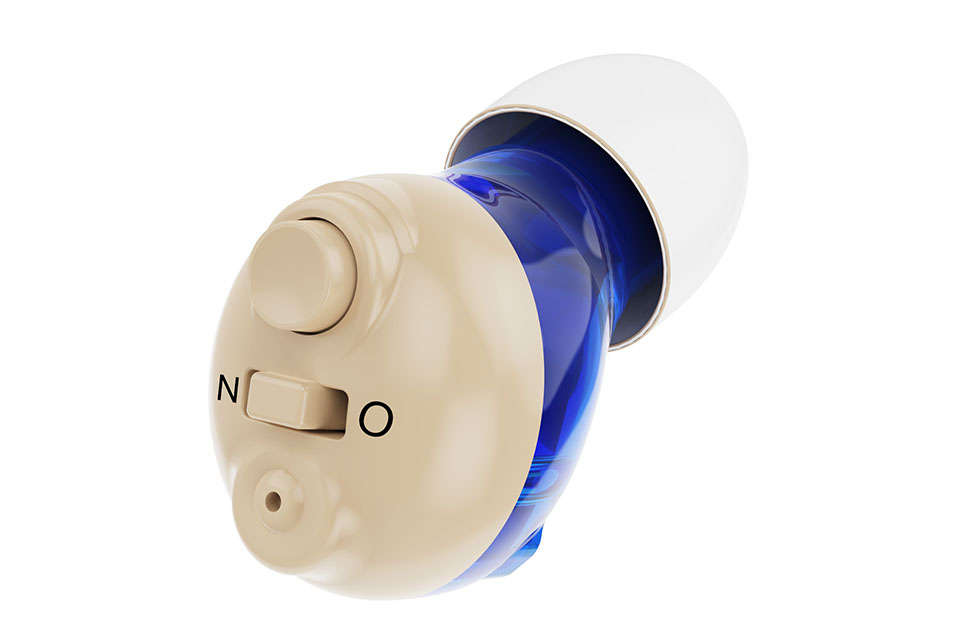
2. Critical Technical Challenges
Electromagnetic Compatibility
The miniaturized circuitry in our Bluetooth Hearing Aids requires shielding against smartphone interference. Solution:
- Ring ground pattern with Ni-Fe alloy (permeability µ=50,000).
- Tolerances of ±0.05 mm on 4-layer wafers.
Durability in Extreme Conditions
Climatic chamber tests (-20°C to 60°C) show:
| Material | Lifespan (hours) |
|---|---|
| Polycarbonate | 15,000 |
| Ti-6Al-4V Alloy | 50,000+ |
Our Rechargeable Hearing Aids use titanium for their housings.
3. Advanced Manufacturing Processes
Atomic Deposition Nanofabrication (ALD)
- 10nm Al₂O₃ layers for a hermetic seal.
- 99.8% efficiency in humidity tests (IP68).
Automated Assembly
6-axis Delta robots place 0.2 mm² components with:
- Accuracy: ±5 µm
- Speed: 12,000 UPH (units per hour)
4. Scalability and Constraints
Bottlenecks:
- Submillimeter tolerances: Require electron microscopes for inspection (cost: $250/hour).
- Supply chain: Shortage of rare earths for neodymium (NdFeB) magnets.
Our solution in BTE Hearing Aids Wholesale:
- Strategic stock for 3M units/year.
- Alternatives with barium ferrites (40% reduced cost).
5. Priority Sectors
Biomedical
- Cochlear implants with PEEK coating (ASTM F2026 biocompatibility).
- Rejection rate: <0.5% vs. 3% for surgical steel.
Consumer Electronics
Transparent circuitry in our TWS Hearing Aids:
- Resistivity: 10⁻⁴ Ω cm (Sn-doped ITO).
- Optical transmittance: 92% @550nm.
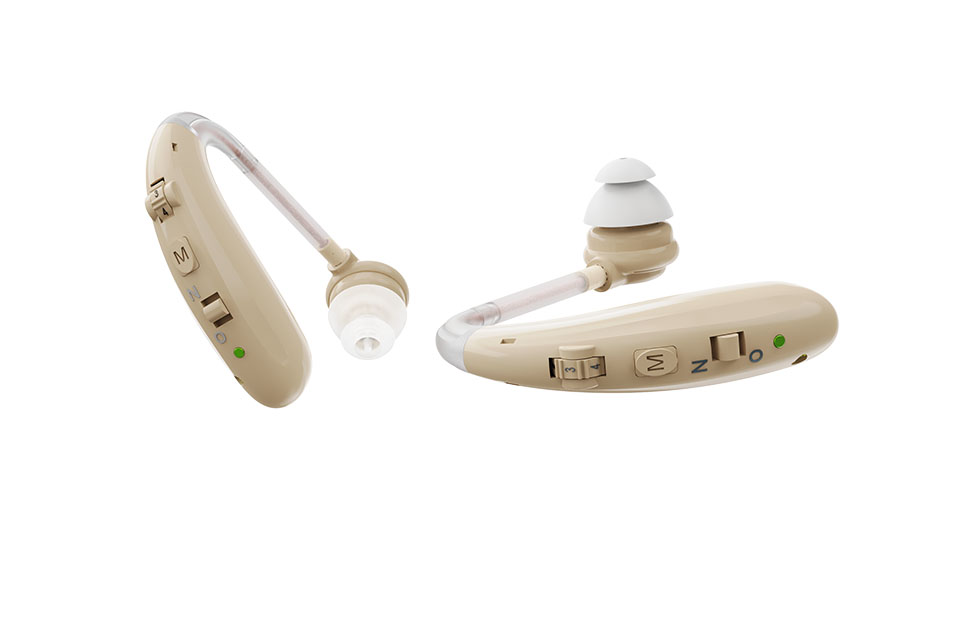
6. Emerging Innovations
Metamaterials for Active Noise Cancellation
- Auxetic structures that block an additional 30dB.
- Implemented in Noise Reduction Hearing Aids.
Gaps:
- Graphene cost: $100/cm² vs. $0.1/cm² for copper.
7. Sustainability
Circular Economy
- Li-ion recycling: 98% purity through hydrometallurgy.
- Carbon footprint: 1.2kg CO₂eq/unit (vs. 3.5kg industry standard).
Our Hearing Aid Accessories program:
- Post-consumer recycling kits.
- Return bonuses.
8. Future Trends
Self-Healing Systems
- Polymers with DCPD microcapsules (90°C cycloaddition).
- Automatic repair of cracks <50 µm.
Required Investment:
- $2.5M for R&D in 2026.
- Estimated ROI: 3.2 years.
Figure 3: Repair microcapsules in a polymer matrix
Conclusion:
As a leader in the China Hearing Aids Factory, we combine:
- Technology: 32-core DSP + AI for real-time fitting.
- Manufacturing: ISO 13485 with 99.2% yield.
- Support: OEM/ODM for custom designs for In-Ear Hearing Aids.

